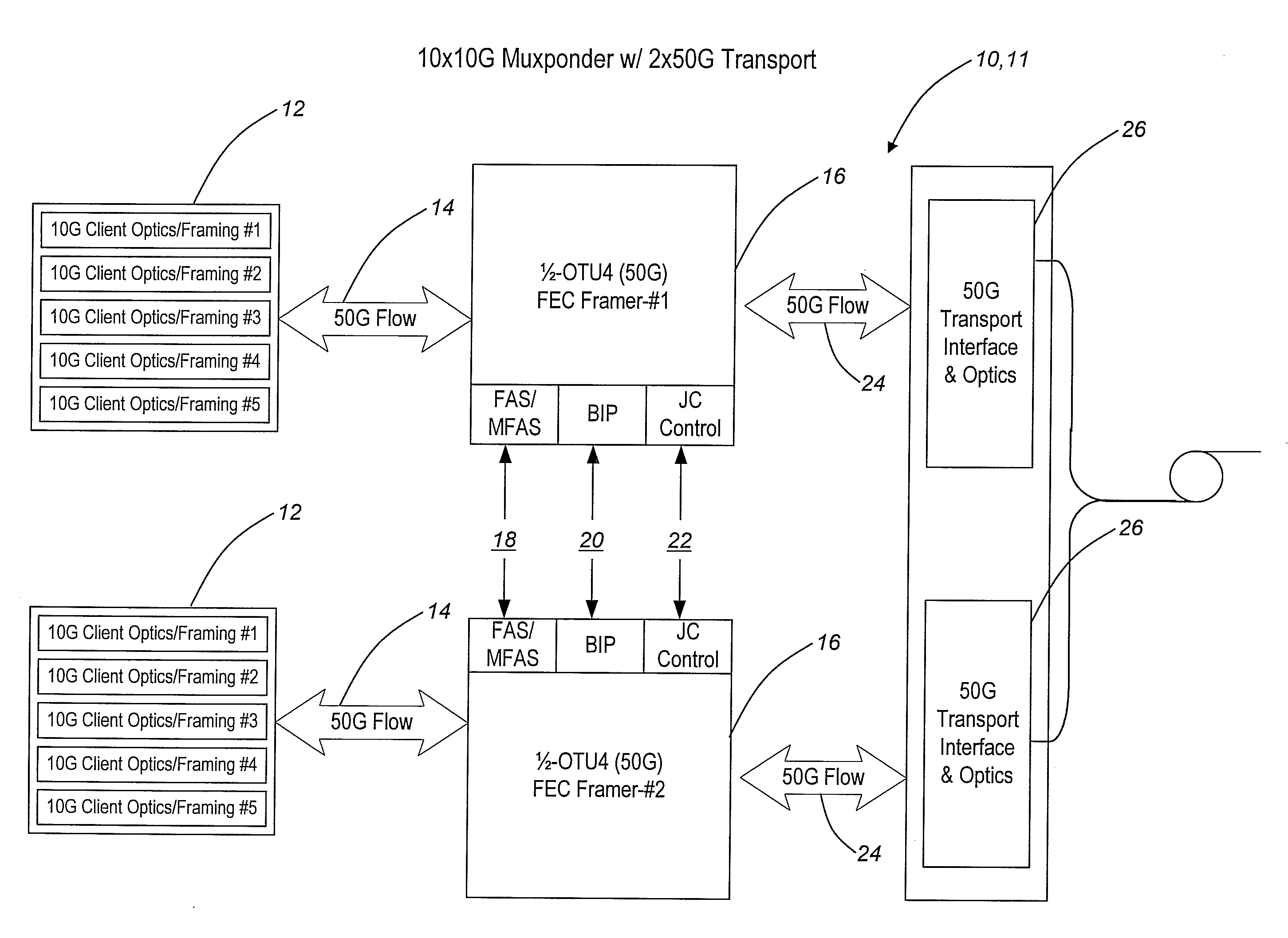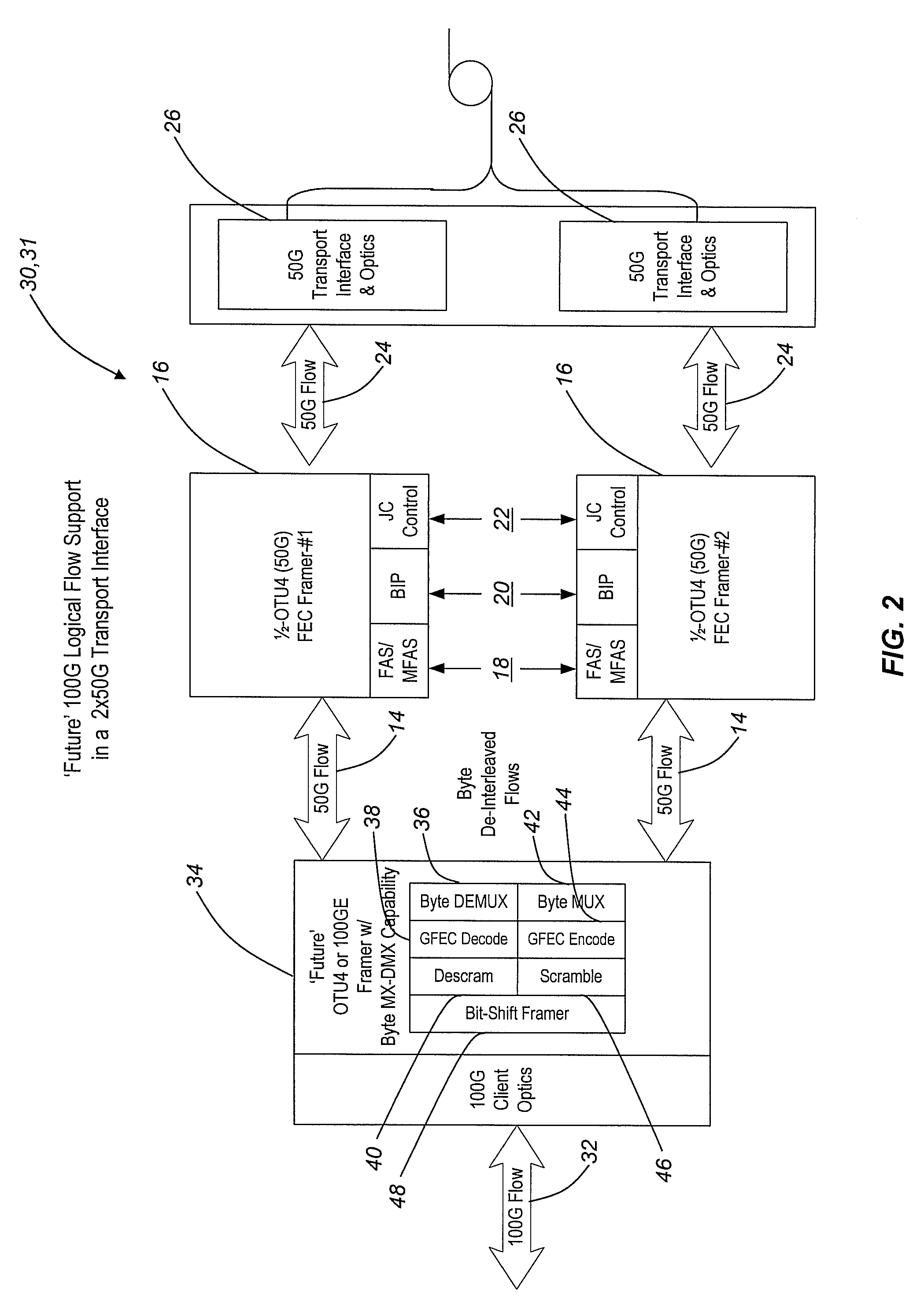Byte-interleaving systems and methods for 100g optical transport enabling multi-level optical transmission
a technology of optical transport and interleaving systems, applied in the field of optical networking, can solve the problems of 100 g serial optical transmission being possible but very unrealistic today, and achieve the effect of convenient, efficient and cost-effectiv
- Summary
- Abstract
- Description
- Claims
- Application Information
AI Technical Summary
Benefits of technology
Problems solved by technology
Method used
Image
Examples
Embodiment Construction
[0017]As alluded to above, the present invention provides a multi-channel framing protocol that enables the development of 100 Gb / s (100 G) multiplexing transponders (MUXPONDERS) and other optical transport equipment today. Advantageously, this optical transport equipment initially multiplexes (MUXs) / demultiplexes (DEMUXs) lower rate client signals, such as Optical Transport Unit 2 (OTU2) client signals, 10 Gb / s Ethernet (10 GbE) client signals, Optical Carrier-192 (OC-192) client signals, Optical Carrier-768c (OC-768c) client signals, etc., into two 50 Gb / s (50 G) or four 25 Gb / s (25 G) logical flows that are carried over a single wavelength. This is done using off-the-shelf electronic technologies that are compatible with future 100 G standard signaling formats, such as Optical Transport Unit 4 (OTU4) and 100 Gb / s Ethernet (100 GbE). The sub-rate multiplexed (MUXd) client signals are byte-demultiplexed (DEMUXd) prior to being encapsulated into a ½-OTU4-like frame, in the case of 2...
PUM
 Login to View More
Login to View More Abstract
Description
Claims
Application Information
 Login to View More
Login to View More - R&D
- Intellectual Property
- Life Sciences
- Materials
- Tech Scout
- Unparalleled Data Quality
- Higher Quality Content
- 60% Fewer Hallucinations
Browse by: Latest US Patents, China's latest patents, Technical Efficacy Thesaurus, Application Domain, Technology Topic, Popular Technical Reports.
© 2025 PatSnap. All rights reserved.Legal|Privacy policy|Modern Slavery Act Transparency Statement|Sitemap|About US| Contact US: help@patsnap.com



